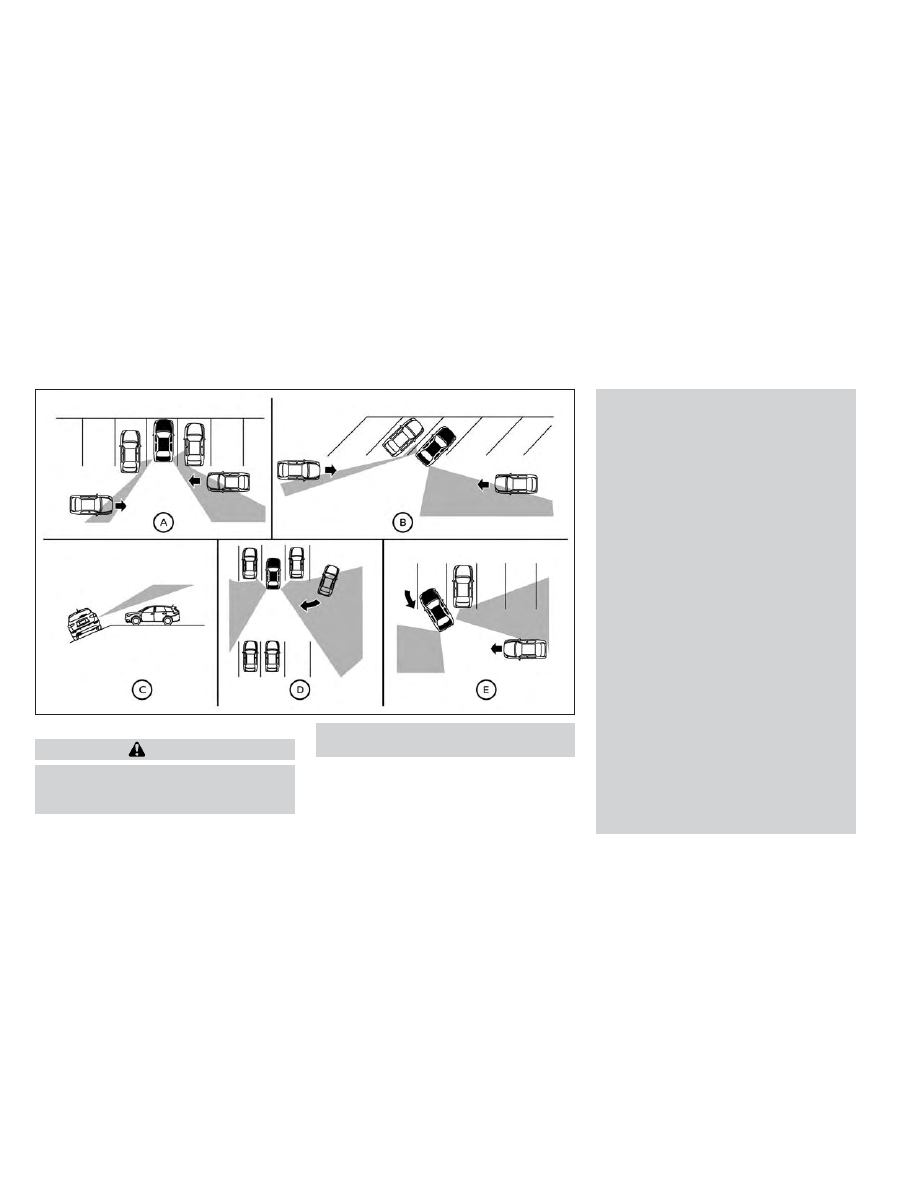Nissan Titan (2023 year). Manual in english - page 24

RCTA SYSTEM LIMITATIONS
WARNING
Listed below are the system limitations
for the RCTA system. Failure to operate
the vehicle in accordance with these
system limitations could result in seri-
ous injury or death.
•
Always check surroundings and turn
to check what is behind you before
backing up. The radar sensors detect
approaching (moving) vehicles. The
radar sensors cannot detect every
object such as:
–
Pedestrians,
bicycles,
motor-
cycles, animals or child-operated
toy vehicles
–
A vehicle that is passing at speeds
greater than approximately 19
mph (30 km/h)
–
A vehicle that is passing at speeds
lower than approximately 5 mph
(8 km/h)
•
The radar sensors may not detect
approaching vehicles in certain situ-
ations:
–
Illustration
O
A
: When a vehicle
parked next to you obstructs the
beam of the radar sensor.
–
Illustration
O
B
: When the vehicle is
parked
in
an
angled
parking
space.
–
Illustration
O
C
: When the vehicle is
parked on inclined ground.
–
Illustration
O
D
:
When
an
ap-
proaching vehicle turns into your
vehicle's parking lot aisle.
LSD3195
5-44
Starting and driving